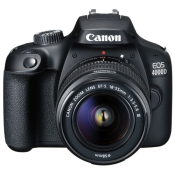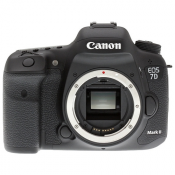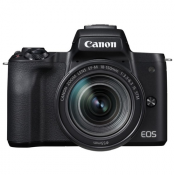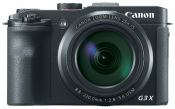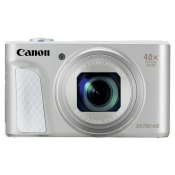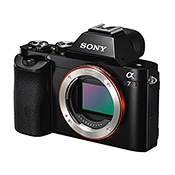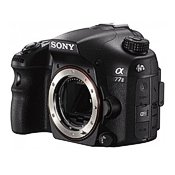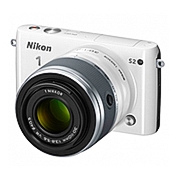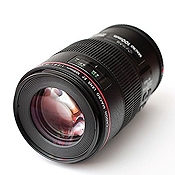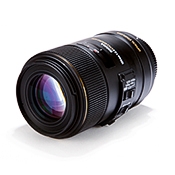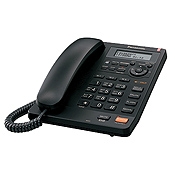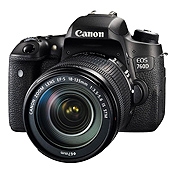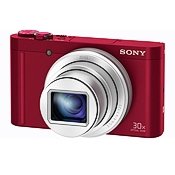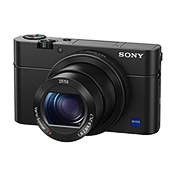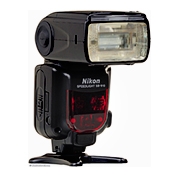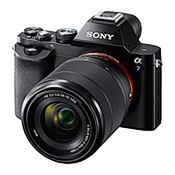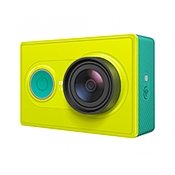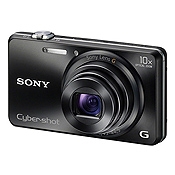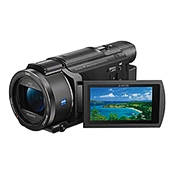Canon EOS 200D Kit
Short review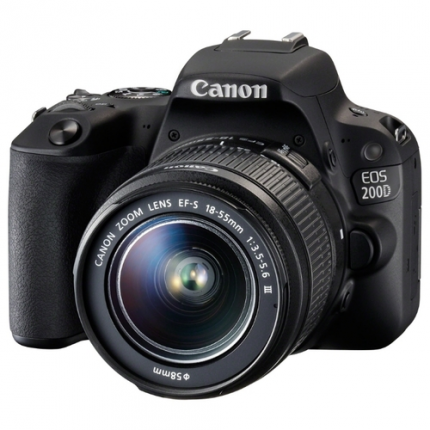
Buy Canon EOS 200D Kit
Canon EOS 200D Kit Specifications
Yandex.Market data
| Camera | |
| Camera type | mirror |
| Lens | |
| Interchangeable lens support | Canon EF / EF-S mount |
| Lens included | there is |
| Matrix | |
| Total Pixels | 25.8 M |
| Effective Pixels | 24.2 M |
| The size | APS-C (22.3 x 14.9 mm) |
| Crop factor | 1.6 |
| Maximum resolution | 6000 x 4000 |
| Matrix type | CMOS |
| Color depth | 42 bit |
| Sensitivity | 100 - 3200 ISO, Auto ISO |
| Extended ISO values | ISO100, ISO6400, ISO12800, ISO25600 |
| Matrix cleaning function | there is |
| Functionality | |
| White balance | automatic, manual, from the list, bracketing |
| Flash | built-in, up to 9.80 m, red-eye reduction, shoe, E-TTL II |
| Image Stabilizer (Still Image) | is absent |
| Shooting modes | |
| Shooting speed | 5 fps |
| Timer | there is |
| Timer running time | 2, 10 s |
| Time-lapse mode | there is |
| Aspect ratio (still image) | 4:3, 3:2, 1:1, 16:9 |
| Viewfinder and LCD | |
| Viewfinder | mirrored (TTL) |
| Using the screen as a viewfinder | there is |
| Viewfinder field of view | 95% |
| LCD screen | 1,040,000 dots, 3 inches |
| LCD screen type | swivel, touch |
| Exposition | |
| Excerpt | 30 - 1/4000 s |
| X-Sync shutter speed | 1/200 s |
| Manual setting of shutter speed and aperture | there is |
| Automatic exposure processing | shutter priority, aperture priority |
| Exposure compensation | +/- 5 EV in 1/3-stop increments |
| Exposure metering | center-weighted, general (Evaluative), point |
| Exposure Bracketing | there is |
| Focusing | |
| Autofocus type | phase |
| Focus points | 49 |
| AF illuminator | there is |
| Manual focus | there is |
| Face Focus | there is |
| Memory and interfaces | |
| Memory card type | SD, SDHC, SDXC |
| Image formats | JPEG (2 levels compressed), RAW |
| RAW + JPEG recording mode | there is |
| Interfaces | USB 2.0, video, HDMI, mic-in, audio, Wi-Fi, Bluetooth, NFC, remote control jack |
| Food | |
| Battery format | your own |
| Number of batteries | 1 |
| Battery capacity | 650 photos |
| Video and sound recording | |
| Video recording | there is |
| Video recording format | MOV, MP4 |
| Video codecs | MPEG4 |
| Maximum video resolution | 1920x1080 |
| Maximum video frame rate | 60 frames / s |
| Maximum frame rate when shooting HD video | 50/60 fps @ 1280x720, 50/60 fps @ 1920x1080 |
| Video recording time | video file size 4 GB or 29 minutes |
| Sound recording | there is |
| Other functions and features | |
| Body material | metal / plastic |
| Additional features | tripod mount, remote control, orientation sensor, computer control, HDR shooting |
| Sales start date | 2017-07-31 |
| Dimensions and weight | |
| The size | 122x93x70 mm, without lens |
| Weight | 456 g, with batteries |
Opinions from the Canon EOS 200D Kit
Yandex.Market data
Advantages:
1 Weight 2 Image quality 3 Ergonomics 4 Price 5 Nice to work with
Disadvantages:
1 The case is delicate and I don't want to test it for strength, but this is not a Mark either
Comment:
How to evaluate the quality of stabilization if the matrix is not stabilized? Stabilizers are only in lenses, but that's another story)) I took it for a try after switching to Canon from Sony. I have been using it since October 17. During this time, the camera showed itself exceptionally well. There was a small joint - the pen creaked, but a short trip to the SC solved the problem for free. Everything else is good. And in winter, in frosts, and in summer, in heat, and in the studio - everywhere without any complaints. Immediately I began to collect a fleet of optics for the future, so I will not analyze a "good" whale. Have not tried it. But with 20 / 2.8, 50 / 1.4, 135 / 2.8soft, 24-70 / 2.8 and 70-200 / 2.8 is II the device shows itself extremely positively. A modern processor, many functions, coupled with good glass give excellent results. Of course, the brands have the necessary professional functions that are absent here, but this is not a drawback, but an adequate level of the three-digit Canon.I do not use child modes myself, I shoot 99% in M mode and the rest is in aperture priority. When buying, I chose between 80D, 77D and 200D, as a result I chose this one, which I do not regret. The picture is exactly the same as on the 77D and slightly better than on the 80D. But I don't need 80s bells and whistles. Next in line is the Mark 4, the 200 will remain the second carcass for certain tasks. By the way, the video is quite decent and the sound is normal from the built-in microphones. Of course, for important events, you still need to use a recorder. Of course, I recommend buying it, provided that you know what you want from the device.
September 2, 2018, Samara
Advantages:
I switched to this unit after the old Pentax k-r. The selection criteria were as follows: compact size and light weight, a rotatable screen, preferably a touchscreen, since this type of display makes shooting much easier for me personally, full hd 50fps video connection via wi-fi. All of the above qualities are implemented quite well. Plus, VERY tenacious tracking autofocus, both in the photo and in the video. Well, the cherry on the cake is a good battery that holds a charge for a long time. Plus, the build quality is high.
Disadvantages:
The body material feels like a toy in the hands, but you quickly get used to it and do not pay attention. An "interesting" autofocus illumination system: the lamp on the body is not an autofocus illumination lamp at all, but only reduces the red-eye effect, the illumination is carried out by a built-in flash, a series of quick "puffs". I recommend turning off the automatic operation of such a backlight in the settings, as you can quickly kill the flash.
Comment:
Finally, ISO can be set on a car, this helps a lot with a KIT lens and shooting in low light, noises in cloudy weather at 800-1600 do not hurt the eyes, and sufficient exposure at high ISO and no stabilization both in the carcass and in the lens, makes the picture sharp. Overall, I am very satisfied. The sound in the video is stereo, for the lover of sufficient volume and quality, the touch display works with a bang, like in a smartphone.
January 30, 2019, Kaliningrad
Advantages:
- dual pixel autofocus - weight - size - rotary display - touchscreen - Many megapixels for such a budget model. - wi-fi - digic 7
Disadvantages:
All the nitpicking is not a flaw, but rather a property of Canon's three-digit lineup. Those who shot on ... 350, 450, 550, 650 will understand that the 200D has grown from its predecessors in all respects and is updated for the latest generation of Canon. Don't forget that the whole three-character branch is amateur. And there is no need to wait for a magnesium case, dust and moisture protection, the rate of fire of reportage cameras and a working ISO 12800. There are no drawbacks for your money and for your class. It's too good for a three-sign! Bracketing alone could have gone + -3 notches. And here there are only 2, and this business is exclusively for firmware. I hope they will finish it sooner or later.
Comment:
I am the owner of 5dmIV and have already got used to the touchscreen and dual-pixel autofocus. The task was to find a cropped baby for the Sigma 8mm for panoramic HDR shooting + so as not to carry a much heavier and more expensive brother on hikes. All that was required from this plastic toy from kindersurprise I got a slack. Even 3 years ago, no one could even dream of such functionality in a budget model. This is a great choice for an amateur (the menu infographics will make you laugh separately :). And no less an excellent choice for a professional for narrow tasks, if you know what exactly you are taking when considering the pros / cons.
January 8, 2018, Krasnoyarsk
Advantages:
- excellent focusing system in LiveView mode - new 25 megapixel sensor - size - coming out of the previous one: weight (without lens 456 g) - 1080p 50fps - Wi-Fi is just a topic, I put it on a tripod for filming in the studio, put it on the phone, sit in your director's room chair and control it remotely - a microphone input (there is no such thing on Sonya for this price !!!), and a camera with a really usable sound card, my 100d lapel gave a terrible sound, at 200d the sound is gorgeous, don't find fault with anything - until new , keeps the battery well, I thought about how to buy it, I'll take another Akum right away, and it turns out that I don't need it, I shot 300 photos in LiveView (!!!) mode (jpeg + raw = 600, that is, you need to understand that the processor is also spent energy on creating a duplicate in a different format) and the battery showed half the charge - the new DIGIC 7 percentage is just a topic, it does everything so quickly that the camera does not doubt it for a second, you are always sure of it - the rotary screen is eating Naturally - if we consider the kit as a bonus in the kit, then it is gorgeous. Seriously, in comparison with the previous version, this one looks more attractive - for beginners there is some kind of super simple mode, did not check, immediately cut it out, but for training they say it is suitable
Disadvantages:
- body materials, all the same plastic, it is good in the hand, but the materials are felt - the continuous shooting mode is 5 frames / sec, it is very doubtful, in reportage and sports only amateur shots - through the viewfinder the focusing is very weak, 7 points and only the central cross-type , that is, the most suitable. Viewfinder straight from 2013, no difference from 100d. - of course, we are not talking about any dust and moisture protection - starting from ISO 3200, all the same, already mediocre pictures, photoshop to help
Comment:
I took for 31 with a whale. The camera is just a cannon, there is simply no competition for this money, it simply does not exist. This is such a universal device, and you can shoot slow-motion video with it, and a photo with amazing sharpness, and you can hang around with it all day, and even hang it on a mirrorless gimbal (I put it on Feiyutech G6 Plus with a whale lens, without any complaints, it works as it should ), and it has a microphone, and a touchscreen and rotary screen. Focusing a DualPixel in a budget model is unrealistic. I do not know why such a gift, but God bless the Japanese for this. In LiveView the Canon EF 50mm 1.8 ll is fully expanded. Focus does not walk, focuses instantly and firmly. The 100d couldn't do that, the 200d gave him life, now it's a pleasure to shoot with autofocus. Yes, you have to pay for the DualPixel and the focusing through the viewfinder is mediocre. Personally, I retrained myself and shoot in LiveView, everything is fine and convenient. Yes, the battery will eat more, so what, this is already a cost. All the listed disadvantages are very minor. We are considering an amateur DSLR for really ridiculous money for such functionality. Not suitable for sports, yes, but he is not sharpened for this either. In the reportage, problems can also arise, but here the approach and the ability to adapt already decide. Stick any modern glass on it - you get an awesome bundle, the camera has a lot of foolishness, with such a focus and a matrix it will open any glass to crop. With ideas, hands and good glass, you can take unrealistic shots. This is an excellent amateur DSLR that will be relevant for more than one year. All cons are overlapped by pluses. I have never regretted that I bought this camera. Now 250d is coming out, the price of 200d will drop even more, and in general a gift for this money. I chose 2 months, learned the whole market. This camera is the most versatile and high quality. It has almost everything you need. Again, there are simply no competitors for this price, in terms of functionality. Well, the video shoots like a machine) 50 frames in 1080 is really suitable, when switching from 25.
May 6, 2019, Kratovo
Advantages:
Sufficiently compact and lightweight, not a bad Kit lens, wi-fi, swivel screen, smart and usable LV
Disadvantages:
The battery holds a charge worse than my 6-year-old 550D, there are some software bugs (I will describe below), there is no proximity sensor and IR receiver (goodbye old remote)
Comment:
I liked the camera: it is user-friendly, works fast, it is a pleasure to work in LiveViev and shoot video. The whale 18-55 made me happy: sharp, nimble. But the firmware is damp: when trying to take a picture on the Sigma 50mm in LiveViev mode, the camera the camera hung up tightly (it brought the battery out to life, solved by disabling the correction), the camera also hangs tightly when you change the lens without disconnecting (and when disconnected, it also hangs, does not turn on , just pull out the battery) .The same battery was installed the worst that the company has: low-capacity, but expensive. Canon is aware of incomplete compatibility with Sigma lenses. The mistake is not the first month. And the error is just a software one, because a colleague with 6DII + 35mmArt had the same problem. (Actual for all cameras with DualPixel) But even despite these little things, I like the camera :)
July 17, 2018, Moscow
Advantages:
The matrix is the same as in the older APS-C models The controls are located very conveniently Good lens included - does not wash around the edges The front part of the lens does not rotate - you can use gradient and polarizing filters High-quality assembly, nothing plays or creaks High-quality recording sound from an external microphone
Disadvantages:
Some software features are missing: Auto ISO setting No built-in rav-converter, instead of it some kind of nonsense - applying artistic filters No tracking autofocus settings No way to make a 1/3 stop ISO change step No ISO50 No silent shooting in LiveView No way to turn off exposure emulation in LiveView (disabled when an external flash is connected) Poor sound recording from the built-in microphone
Comment:
I didn't buy it for myself, I have 6D, I have been using kenon cameras for a long time, I have been in my hands 350D, 650D, 40D, 80D, 5D, 6D. If we consider the possibilities of application for different tasks, in which I more or less understand: 1. Landscape - everything is fine here, from minor inconveniences - there are no C1 C2 modes on the wheel, where you can program the settings. Bracketing - only 3 frames and maximum + -2 2. Portrait - you can shoot (of course you need to buy another lens, at least their new 50 / 1.8 STM for 7000), of the minuses - there is no oriented AF point, so that you can focus on the upper point and there was no need to change it when switching from portrait to landscape orientation. It is better to shoot in live view - there, firstly, it focuses more accurately, and secondly, you can focus on the face and there will be no problems with orientation. The second minus is that auto iso is not configurable, and it works somehow strange. On a whale lens and at 50 / 1.4, the maximum shutter speed is 1/50, although it should be 1/80 (on a whale lens, okay - there is a stabilizer), but at 85 / 1.8 the maximum shutter speed is 1/125. 3. Reporting - probably possible, but severely limits the buffer to 5 raw frames. 4. Sports - everything is bad here, since there are no ServoAF settings at all, focus priority or shooting speed for example. Well, the buffer for 5 frames is of course also very small for this genre. 5. Shooting a video - in my non-professional opinion, everything is fine. Of the features - the built-in microphone is very noisy, but from the external it writes very well, much better than the 6D (I tried the lavalier Boya BY-M1). There are still no recording formats without interframe compression. There is no way to set the color temperature, but you can set the BB + on the white sheet + add compensation if necessary. 6. Travel / use without a computer - it's very bad that instead of a rav-converter, filters are used. On 6D, you can take a photo to the frame, tweak the parameters, save it to zpeg and send it via WiFi to the phone, and then you have to either set everything correctly before shooting, or use the card reader.
May 19, 2018, Dolgoprudny
Advantages:
Took in addition to the old 400D. Good matrix, powerful processor, good battery, good automatic ISO selection algorithm even in aperture priority mode. The depth of field view button is saved. Red-eye reduction lamp. Flash illumination for focusing in low light conditions. Good video with tenacious autofocus. Nice case.
Disadvantages:
Didn't see.
Comment:
I was pleasantly surprised that almost everything exceeds my expectations. I was expecting a simpler model for the money. The body was scolded here - but I have a different opinion. Compared to 400D, the plastic is more pleasant, it is not polished, but a little rough, does not slip. The leatherette on the flu is also better than the old one, he kept striving to peel off. In terms of size and feel in the hands, there is no difference from the 400D, which is an absolute plus for me. An exceptionally intelligent device (this is even without functionality for beginners). WB bracketing, HDR, AutoISO, external flash control and a lot more. For beginners, it's generally ideal - turned on automatic shooting and you get great shots. For those who do not want to bother with processing, a large number of settings, including geometry correction (for registered lenses), blur simulation, soft focus and a lot more. Yes, I did not understand why placing a memory card in the battery compartment is a disadvantage. Personally, I'm glad that Canon has finally implemented USB upload, as it caused inconvenience for a long time. You don't need to get the card out and I don't care where to stick it once. The USB plug is really not a masterpiece, but against the background of everything else, the language does not turn to call it a drawback. In general, I did not expect such a luxury from Canon for 30 thousand rubles. Thank you.
December 18, 2017, Moscow
Advantages:
- Rotary touch screen - FullHD 50 fps - Autofocus in video and live view, but only good with STM glasses - Touch screen simplifies menu navigation - Weight and size ideal for travel. - The picture is better than on the crop of the previous generation, when the ISO is raised, the noise is not so painful to the eye. - Wi-fi for fans of Instagram and other social networks.
Disadvantages:
- The case, it's just disgusting, very cheap plastic. And the saddest thing is that disgusting rubber plugs, especially for the usb-output - I recommend using them rarely and very carefully, because the material of the plugs is very inelastic and the right plug is very difficult to close (tested on several carcasses) - The memory card is in the battery compartment. - As well as on other budget models, there is no installation of BB in Kelvin, but this is mainly important only for video lovers.
Comment:
Compared to the 600D and cameras of that generation, I can say that for home use, if the frame is well exposed ISO can be raised to 6400 at a shutter speed of 1 / 30-1 / 50 - there is noise, but there is no mess that 600D shows in the shadows at the same conditions * By the way, with regard to noise tests - do not look at sterile tests where they shoot at exposures of 1/4000 sec - look for tests in real shooting conditions. Phase autofocus got from the old models - you can't take pictures of sports, but the camera is not for this, and if you do not want to frame the picture after focusing - the Dual Pixel technology is provided - it will do for staged shots. The camera has an intuitive tutorial menu for those who don't understand how the device works. And if you add a touchscreen to this, even a child will figure it out. And a very fat plus follows from this: if you are like a shoemaker without boots - a photographer without photographs of yourself - and you want your child / friend / husband / wife / etc. to photograph you, you just need to set up the camera and give it to him - then the process shooting via live view is no more difficult than taking a picture with a smartphone. Add to this the compactness and weight of the camera, and it is ideal for travel.In principle, the younger brother of this 100D model is very similar, but without a rotary screen and without FullHD 50/60 fps, and if you like to shoot 200D video, it is still better, and the lack of white balance adjustment in Kelvin can be corrected by the WB shift, which is called when choosing a color template (cloudy / sunny, etc.) and all this is done without entering the camera menu - so if the eye is trained, it will do for amateur video. If you want an accurate color temperature in Kelvin, you will have to pay for a more expensive camera or deal with Magic Lantern. After the purchase, I immediately recommend buying 24mm and 50mm STM An example of an in-camera jpeg profile standard, 6400 iso, 1/50, without processing
October 21, 2017, Volgograd
Advantages:
Good photo / video quality, compactness, low cost.
Disadvantages:
Few shooting modes with a resolution of 16: 9. Very high ISO (3200-6400) when shooting with the built-in flash in Basic Zone modes, correspondingly more grain in the image.
Comment:
I bought this unit (with an STM lens) to replace the Nikon P500 non-mirror ultrazoom. The main criteria for choosing were the following: - Wi-Fi (so that you do not have to remove and insert a memory card every time) - the presence of a 16: 9 photo shooting mode - since all photos look on a large TV and the presence of black bars on the screen (in modes 3: 2, 4: 3) is not acceptable. - low cost (up to 35,000 rubles) - the presence of stabilization so that the video taken from the hands is acceptable. Of the entire selection of DSLRs, only this model met these criteria. Canon EOS 200D almost fully met expectations. Unfortunately, two shortcomings have been identified. 1. The 16: 9 mode I want is only available when shooting in Creative modes, and only in Live View mode. That is, through the viewfinder, it still shoots 3: 2. 2. Indoor semiautomatic (creative) flash photography produces high ISOs. Pictures like that are no good, so I use the Tv mode with the ISO set to 200. And the shots are wonderful. But since the device has quite a lot of functions, you need to carefully read the instructions again. Maybe these problems can be solved. P.S. The total size of instructions is (458 + 172 = 630 pages). So mastering this camera is not an easy and interesting task.
December 14, 2018, Moscow
Advantages:
Excellent build quality, dual pixel autofocus, photo quality, material quality, Digic 7, focus speed, weight, menu!
Disadvantages:
9 focus points.
Comment:
The 9-point focus problem is solved by a new processor. The quality is at a height and according to the experience of use and according to the tests of prof. testers. I do not regret buying at all. I bought it for 32,000. I recommend buying an EF 50 mm f / 1/8 STM lens for it !!!
May 4, 2018, Voronezh
